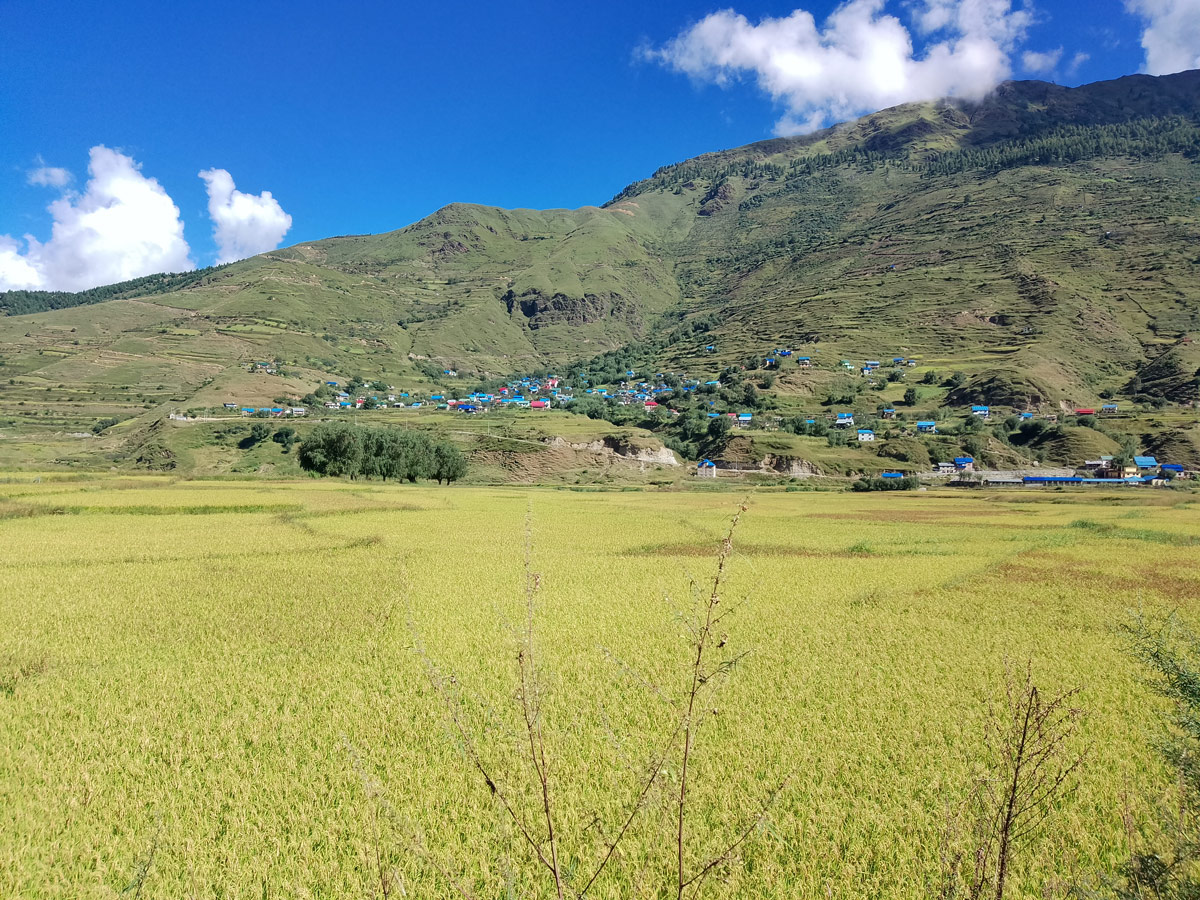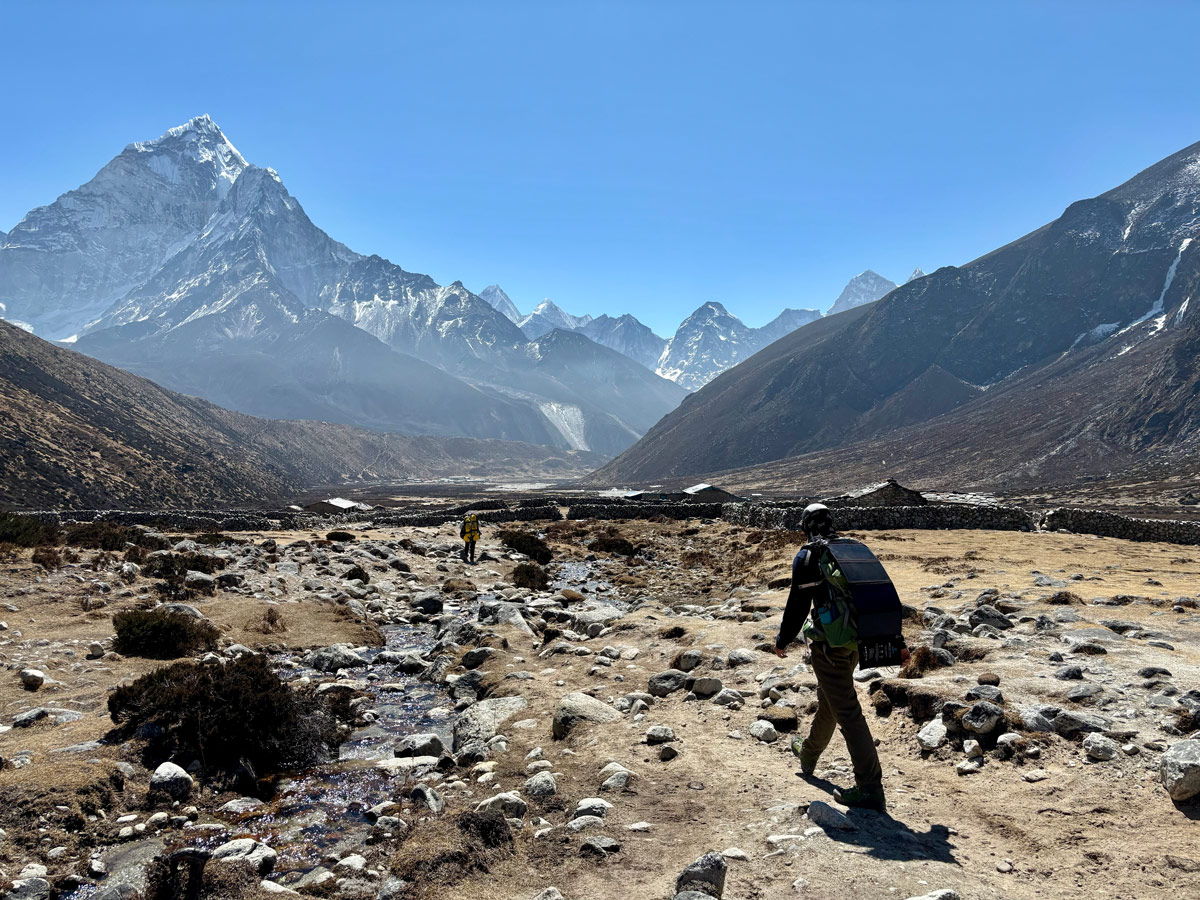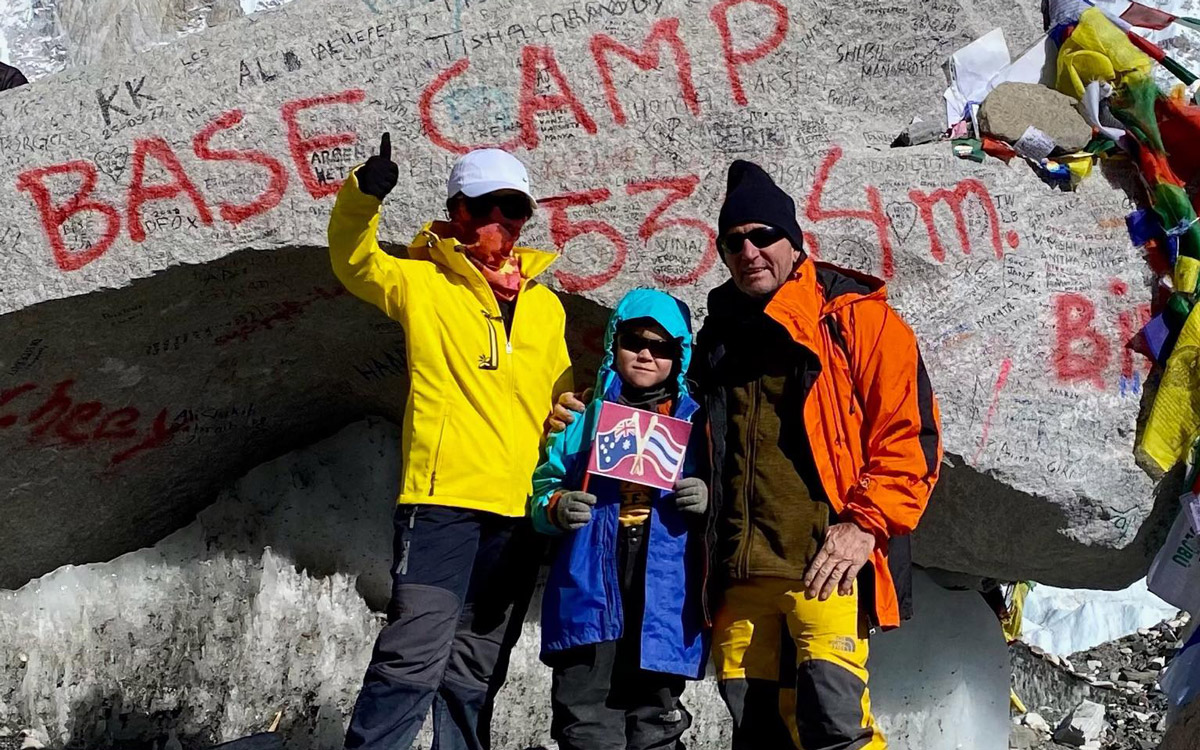Whenever you think of Nepal, you will most likely picture yourself exploring the soaring snowcapped Himalayas as you explore the winding trekking trails, probably making your way up to Mt. Everest or any other legendary peak.
While that side of Nepal is a true adventure, exploring Nepal is not just about that. It is not just about the Himalayas and treks; these are merely a single chapter when it comes to exploring Nepal. The country has much more to it.
This other side of Nepal includes experiences steeped in centuries old traditions, colorful festivals, and the warmth of local hospitality. If you are seeking an experience beyond the postcard views, this blog is the perfect guide for you.
For a curious traveler, authentic experiences in Nepal offer a way to truly connect with Nepal’s culture, spirituality, and way of life. Therefore, in this blog, we have compiled 8 authentic experiences in Nepal that go beyond just trekking. Brace yourself!
Homestay in a Nepali Village
Staying in hotels and lodges in Nepal is a good option where you can get all the amenities, privacy, and the resources for a good night’s sleep. However, will it give you the cultural exposure? No.
An immersive homestay experience in Nepal is what will make you feel truly connected to the locals. You can get a local homestay experience in any of the villages that you explore, and even during trekking as teahouse trekking is famous in Nepal.
During your homestay, you step away from the tourist life and enter a local Nepali household. You will be a part of the daily life of a Nepali family where you will share their home, their meals, and their daily routine.
As you wake up to the sound of roosters and the smell of wood smoke, you will sip a cup of tea and learn how to cook food and weave baskets as you help your host family with their chores.
Not only this, but you will also hear stories passed down generations related to the local culture and festivals. If you are travelling during festive season, you will also be able to experience many rituals up close. Now, isn’t that cool?
At the end of the stay, you will leave with genuine connections as homestays are not a performance, they are an invitation for you to explore local life the way it is. Also, be prepared for the warm local hospitality.
Volunteer in a Remote Village
For travelers seeking a meaningful experience beyond sightseeing, volunteering in a remote Nepali village offers a chance to make a real impact while immersing yourself in daily village life. This experience goes beyond simply observing; you actively contribute to the community while learning about their culture and traditions.
You can choose programs such as the Arupokhari School Volunteer Program, where you teach in local schools, assist children with English or other subjects, and support the community in educational activities. Another option is the Rebuild Home Volunteer Program, where you help rebuild homes, participate in village development projects, and engage with locals in everyday life.
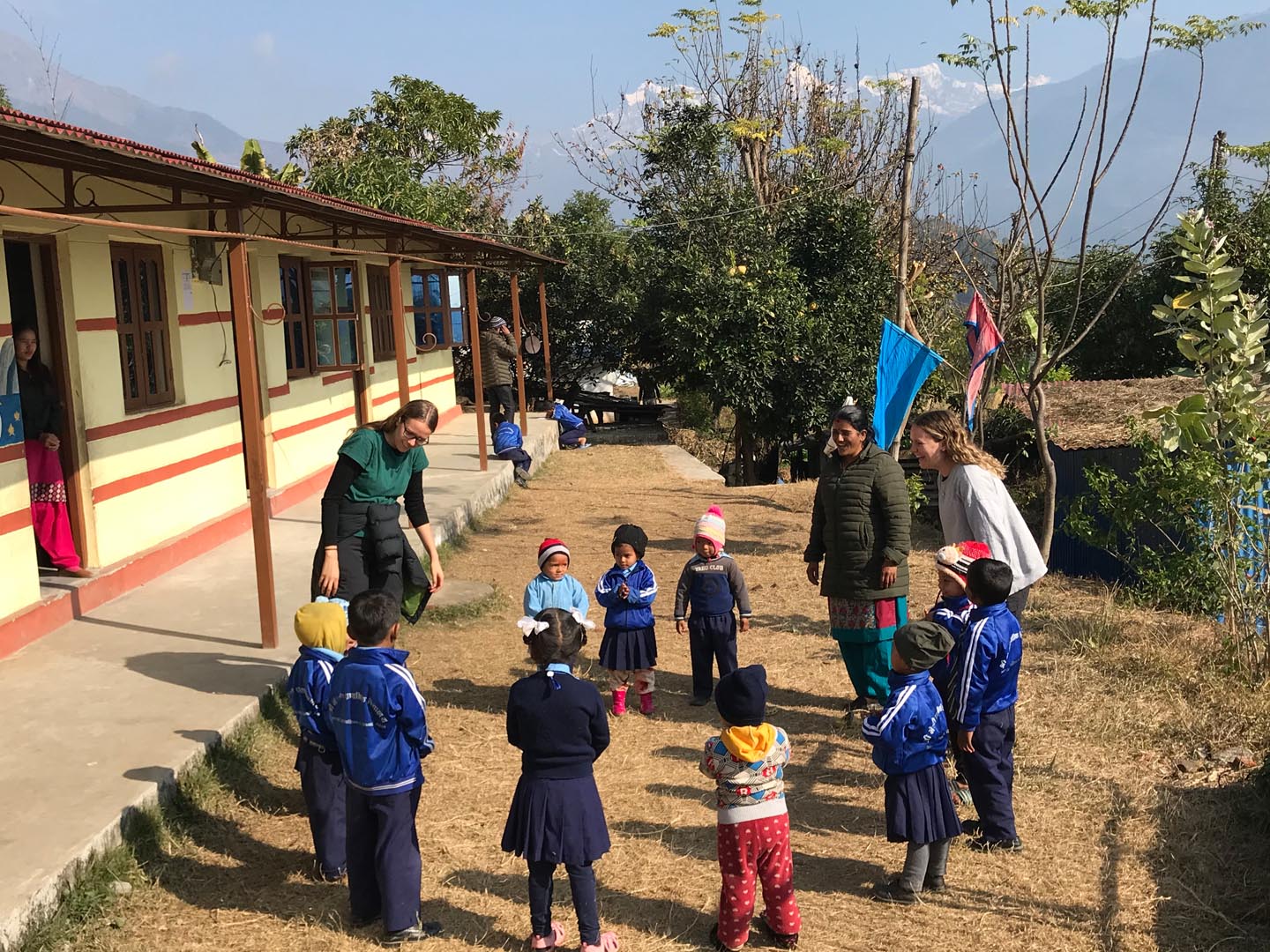
Living in a village while volunteering allows you to experience authentic Nepali life: waking up to the rhythm of the village, joining families in their chores, learning traditional farming techniques, and sharing meals prepared with local ingredients. Along the way, you develop meaningful connections with villagers and leave a positive mark on the community.
This kind of volunteering experience provides more than just a sense of contribution—it gives you a deep understanding of rural life in Nepal, the challenges locals face, and the warmth of their hospitality. It is a perfect way to travel with purpose while creating lifelong memories.
Join a Nepali Cooking Class
The Nepali cuisine is not just food, for the locals, it is the window to the Nepali culture and a love language. Now, whoever has tasted it would know, the food in Nepal is an irresistible and flavorful attack on your taste buds.
While tasting different Nepali delicacies is a great way to explore food in Nepal and satiate your palate, you can make this experience even better by actually learning how to cook Nepali food.
That way, you won’t have to leave this delicious food back when you go home. You can actually carry the essence of Nepali cuisine with you and your palate will thank you for it.
Joining a Nepali cooking class can be one of the authentic experiences in Nepal as it starts from the bustling local market to collect the ingredients and takes you all the way to a local kitchen.
Learning how to make staples like Dal Bhat Tarkari (Rice, lentils and curry), momo, thukpa, sel roti, and achar can be a very rewarding feeling as you get better at it. The adrenaline rush after rolling your own momo is of a different kind.
You can easily find one of many short traditional cooking classes in cities like Kathmandu, Pokhara, Patan, and other various parts of Nepal. Remember, the experience is not just about learning a recipe, it is about delving into the soul of a dish.
Experience the Majestic Evening Arati at Pashupatinath Temple
One of the most spiritual places in the world, the mystical Pashupatinath Temple is located in the heart of Kathmandu. This ancient temple is located along the banks of the Bagmati River where a Sandhya Arati takes place everyday.
This evening arati is a Hindu ceremony that includes oil lamps, fire, music, chanting, and lots of devotion. The evening arati at Pashupatinath Temple is a spectacle worth witnessing.
Thousands of devotees gather at the banks of the river every evening as the priests set up everything required for the arati. The light from hundreds of flickering oil lamps and the air of spirituality truly enhances the experience.

The air fills with the sound of chants, bells, and drums as the priests wave large lamps in unison, honoring Lord Shiva. Pilgrims sing along the devotional songs (bhajans) and chant the spiritual mantras.
In the background, incense smoke curls into the night sky, and the river reflects the golden light of devotion. And this is not just a performance for tourists, it is an everyday occurrence where people participate out of their belief in God.
Another thing that you will see here is a unique dance of life and death. Where on one side of the river people beam with spirituality for the arati, the other side of the river is a cremation ground where people are constantly being burned on funeral pyres with grieving family members left behind.
Walk With a Monk in a Monastery
When you are in Nepal, you are probably there to take a break from the daily hustle and bustle and the chaos of city life. Now, what better place to do it than a quiet monastery perched on a hillside in Nepal?
Here, time seems to stand still and you can delve into internal reflection and introspection. Nepal features many such monasteries, and most of them allow you to spend some time with the resident monks.
Some of the most popular monasteries for this experience include Kopan Monastery in Kathmandu Valley, Namobuddha Monastery in Kavre District, and Neydo Tashi Choling Monastery in Pharping.
These monks can guide you through the monastery and show you around the prayer halls, communal areas, and explain the architecture of the monastery. Along with that, they can also tell you about the religious significance of the monastery.
Most of the monasteries include vibrant and meaningful murals, each with a deep meaning associated with Buddhism. Understanding these murals can bring you closer to spirituality.
Even if you are not into spirituality, you can just explore the ideas of meditation and inner peace while also taking part in a meditation session as you gain personal insight into a world hidden from public view.
Celebrate Mani Rimdu in Tengboche Monastery
Many festivals are celebrated in Nepal every year. Mani Rimdu is one such festival celebrated in the Himalayan region, especially by people following Tibetan Buddhism.
The most vibrant celebration of Mani Rimdu in Nepal takes place in Tengboche Monastery in the Everest region. This festival is typically celebrated in October or November, depending on the Tibetan lunar calendar.
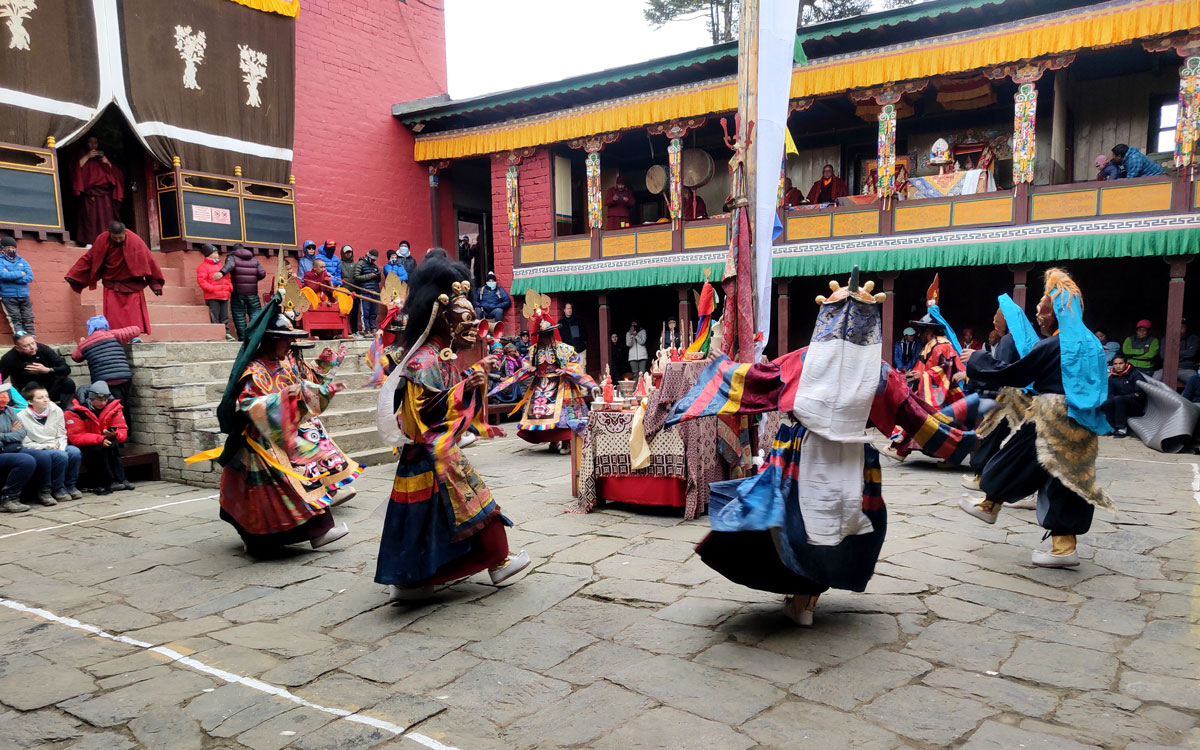
The celebration includes masked dances performed by the monks. Known as Chham, these dances enact the stories of the victory of good over evil and convey teachings of Buddhism. This annual festival lasts for around five days, and the entire community comes together to celebrate it.
The main purpose of this festival is to honor the Buddhist Guru Rinpoche. Chants and blessings from the Lamas and elders of the community are also an integral part of the celebration.

If you are on the Everest Base Camp trek during this period, visiting Tengboche offers a unique opportunity to witness Mani Rimdu firsthand. Along your trek, you can experience the vibrant colors, rhythmic dances, and spiritual energy of the festival, making your journey to Everest Base Camp not just a physical adventure but also a cultural and spiritual one.
Witness Tiji Festival in Upper Mustang
Yet another vibrant festival to explore in the Himalayas of Nepal is the Tiji festival that is celebrated in the unique high-altitude region, i.e. around Upper Mustang, specifically in Lo Manthang.
This annual festival takes place for three days in May and for those three days, you will see the restricted kingdom of Lo Manthang come to life. This is one of the most mysterious and vibrant cultural celebrations of Nepal.
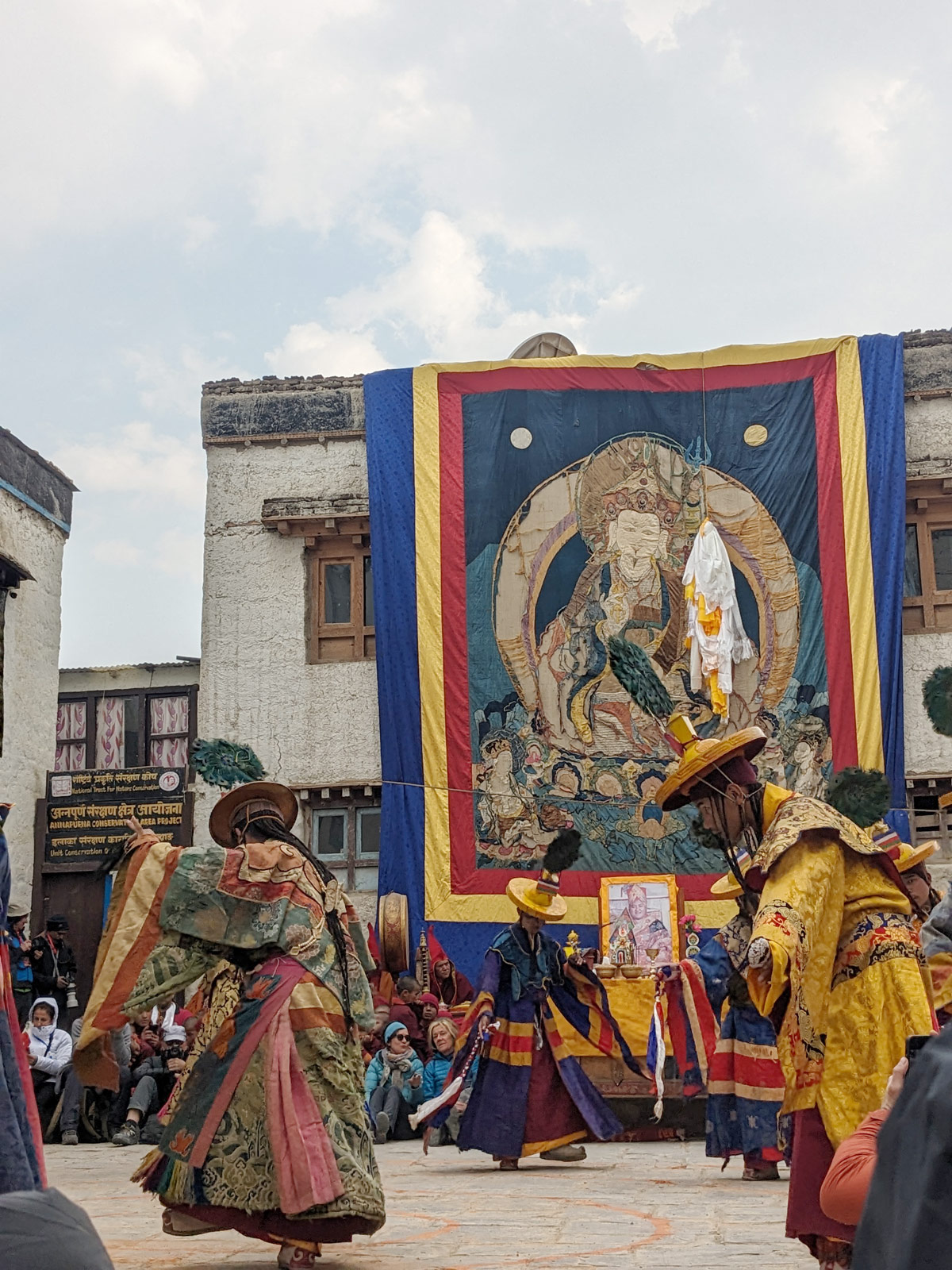
The main legend behind this festival is about a deity’s battle against a man-eating demon to save the kingdom from destruction. This story is reenacted by the monks as they perform intricate dances and rituals.
The festival is a whirlwind of color, with traditional music, unique costumes, and the gathering of the entire community in the ancient city square and it brings the entire Upper Mustang region to life.
Also, what makes it more special is that the festival is not accessible to all as exploring the Upper Mustang region requires a special restricted area trekking permit as it is one of the restricted trekking routes of Nepal.
Experience the Vibrant Indra Jatra Festival in Kathmandu
For those exploring during the festive season, nothing can be more fascinating than the Jatras of Kathmandu. And we say Jatras because it is not just limited to one. The valley features many vibrant Jatras.
During the time of these Jatras, the Kathmandu valley truly comes to life. One of the best jatras is the Indra Jatra in Kathmandu which really gives you a glimpse into the long conserved Newari heritage of the valley.
This is one of Kathmandu’s grandest street festivals and it honors Hindu deity Indra who is considered the god of rain. This Jatra also marks the end of monsoon in the country.
Indra Jatra lasts for a total of 8 days and features many small jatras within itself. Chariot processions take place while the city is filled with music, chaos, and lots of energy.
The highlight is the pulling of the chariots of the Living Goddess Kumari, a young girl believed to be the living embodiment of the goddess Taleju and regarded as the Living goddess of Nepal, and two other deities.
Besides this, many masked dances can also be seen which includes the famous Majipa Lakhey (demon dance) and the Pulu Kisi (elephant dance), which are performed in the city squares.
These dances are performed to ward off evil, and the pulling of Indra’s ceremonial flag in the beautiful Basantapur Durbar Square officially opens the festivities. You would have not seen anything of this kind before!
Watch Sunrise from Poonhill or Nagarkot
Experiences need not be glamorous and otherworldly to be considered an authentic experience in Nepal; it can be something as simple as a beautiful sunrise from a vantage point such as Poonhill or Nagarkot as you sip a warm cup of tea.
Both these locations are easily accessible after a few hours’ drive from Kathmandu. For Poonhill, you need to hike for 2 to 3 hours from Ghorepani and this becomes a small trek spanning over 3 to 4 days; the Ghorepani Poonhill Trek.

However, the views despite the accessibility are something worth experiencing. You can see an entire stretch of snowcapped Himalayas standing in a distance while sun rays fall on them.
The view is even better during the golden hour, i.e. during sunrise or sunset where you can see an entire spectrum of colors ranging from different hues of red and orange to pink. The entire skyline comes alive.

Why this experience becomes authentic is because it is not just another golden hour view that you are capturing. Instead, it is an immersive journey shared with other enthusiastic explorers into the life and culture of the people who call the mountains home.
Conclusion
In Nepal, each turn and corner await you and can offer you a lifetime of discovery. However, it is entirely up to you in what capacity you explore these experiences.
You can either be a tourist and leave with a camera full of photos, or you can be a guest and gain authentic experiences in Nepal and leave with a bag full of memories and mental and emotional souvenirs. We would suggest the latter.
Don’t just visit Nepal, live it. Whether in the form of watching the charming Sandhya Arati at Pashupatinath or learning the flavors and spices of the country, embrace the country and it will embrace you right back.
With these authentic experiences in Nepal beyond trekking, you will gain a deeper, more meaningful connection with the country. Experience Nepal, don’t just see it!
